(c) Maximilian Schönherr | Jan 2011 | If you find any copyright concerns with the photos in the magazines, pls let me know |
||||||||
| Archiv | Archive | ||||||||
| "The Illustrated London News", Jan 25, 1936 | ||||||||
The Illustrated London News is known as the first weekly magazine ever. The special "double" issue depicted here was published five days after the death of King George V The magazine is roughly A3 in size and holds 40 pages. The "Publishing Office" was located at 346, Strand, London, W.C.2. I couldn't find a single entry about the photographers. If there are any copyright concerns, please let me know. Volume 188 cost the reader two shillings. |
||||||||
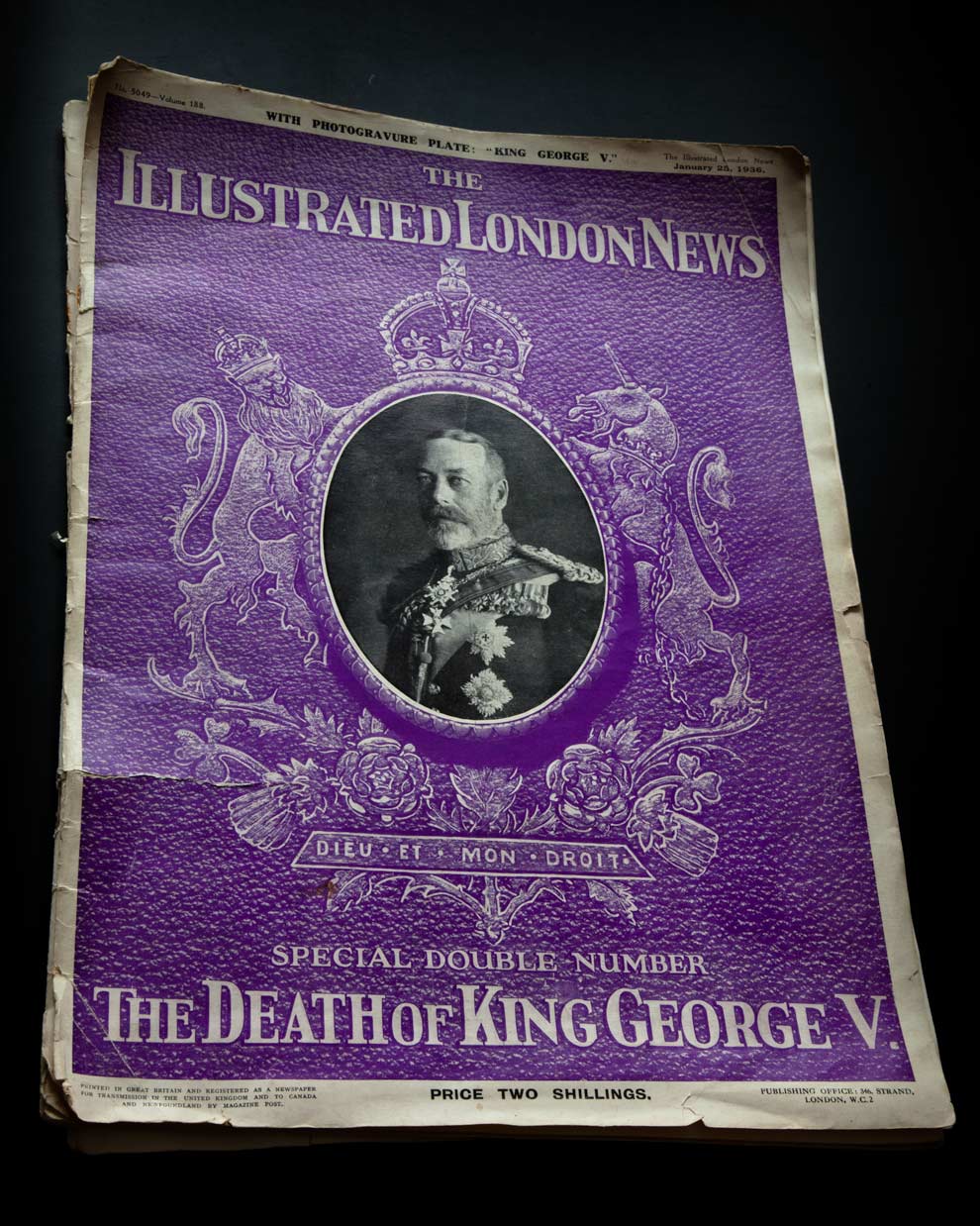 |
||||||||
The main statement of the magazine is that of mourning and high devotion to the royal family. 'Worldly' participants in the British parliamentary system play only a marginal role. Even the ads (Rolls Royce car specialists etc.) stick close to aristocratism. The opening pages consist of five advertisments on the left (Scotch Whisky, The New MG, Enjoy Jamaica, Deaf hearing aid, Howard's Duvet Chairs) and a reproduction of a painting by J. St. Helier Lander on the right: "His Late Majesty King George V. - To the profound regret of his people here and beyond the seas, his Majesty King George V., who had been lying ill since January 17, died at Sandringham House, his Norfolk home, at five minutes to midnight on Monday, January 20. His late Majesty was born on June 3, 1865, at Marlbourgh House." |
||||||||
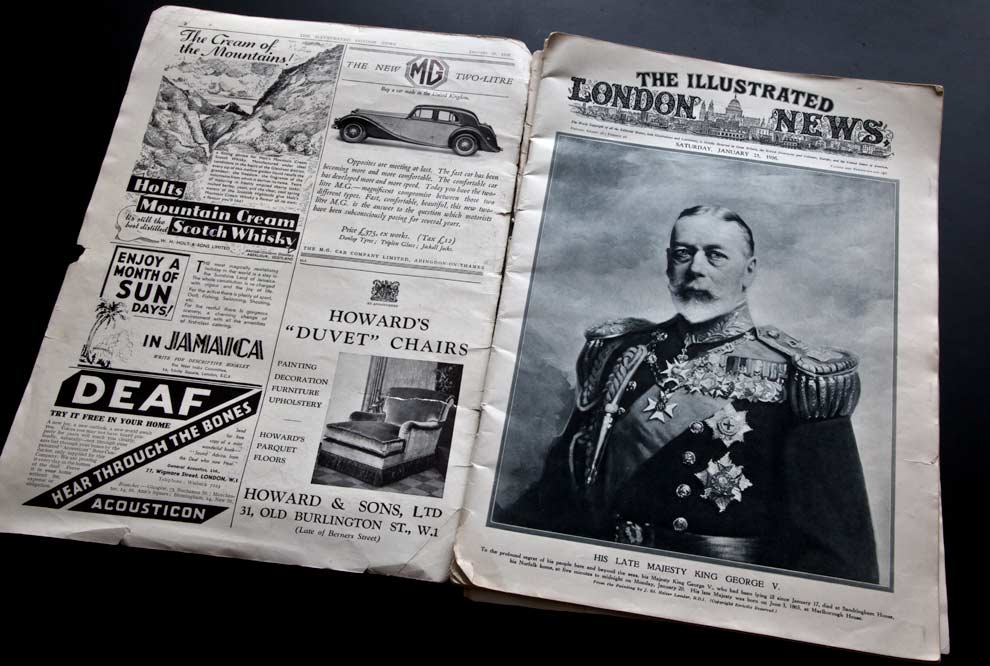 |
||||||||
| Below: a detail of page 2, "The new MG Two-Litre"-ad. The car is supposed to be a "magnificent compromise" between comfort and speed. It cost "£ 375, ex works (Tax £ 12)" | ||||||||
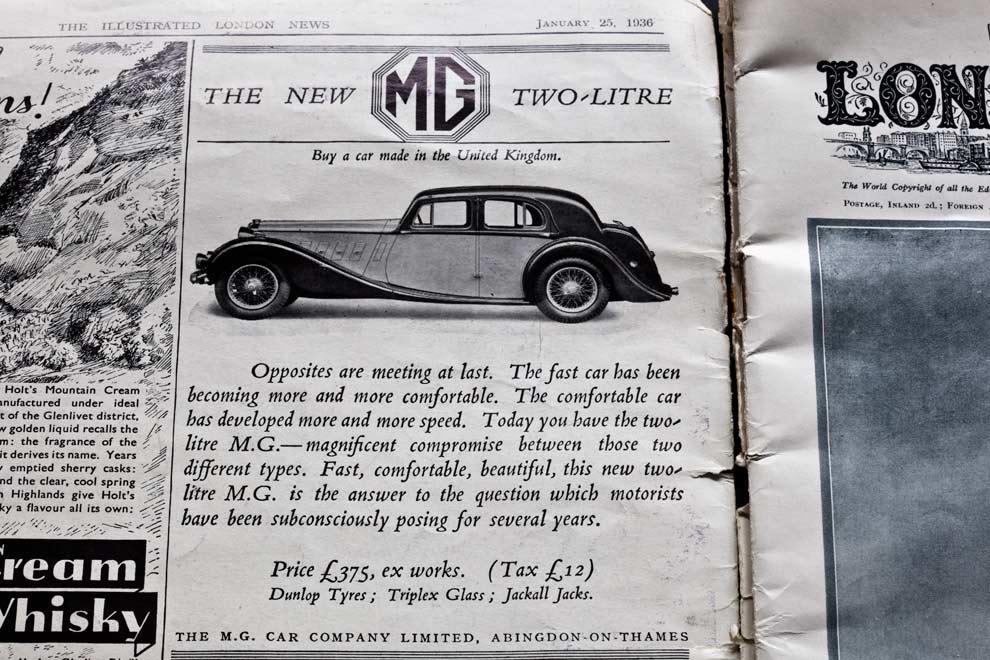 |
||||||||
The next double page is titled "Four Generations" with Queen Victoria to the left, and to the right "King Edward VII. (then Prince of Wales), her grandson, King George V. (then Duke of York), and her great-grandson, King Edward VIII. (Prince of Wales beford King George's death) - A historic portrait group by the late Sir William Q. Orchardson, R.A. (1932-1910)" The painting was finished in 1899 and can be found today in the National Portrait Gallery, London. |
||||||||
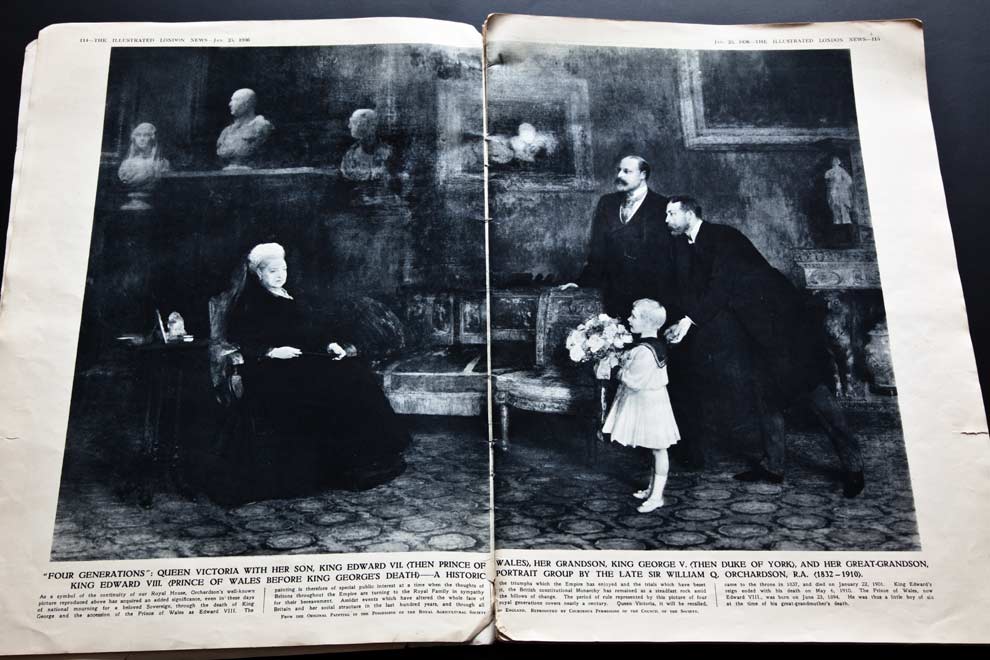 |
||||||||
The sunday service on the day before King George V.'s death, January 10, 1936. The painting shows George's pew on the right of the choir empty. Most "worshippers were parishioners (estate servants and inhabitants of the royal villages), two ladies in-waiting, and a gentleman in-waiting." The church of St. Mary Magdalene is on the estate of Sandringham. |
||||||||
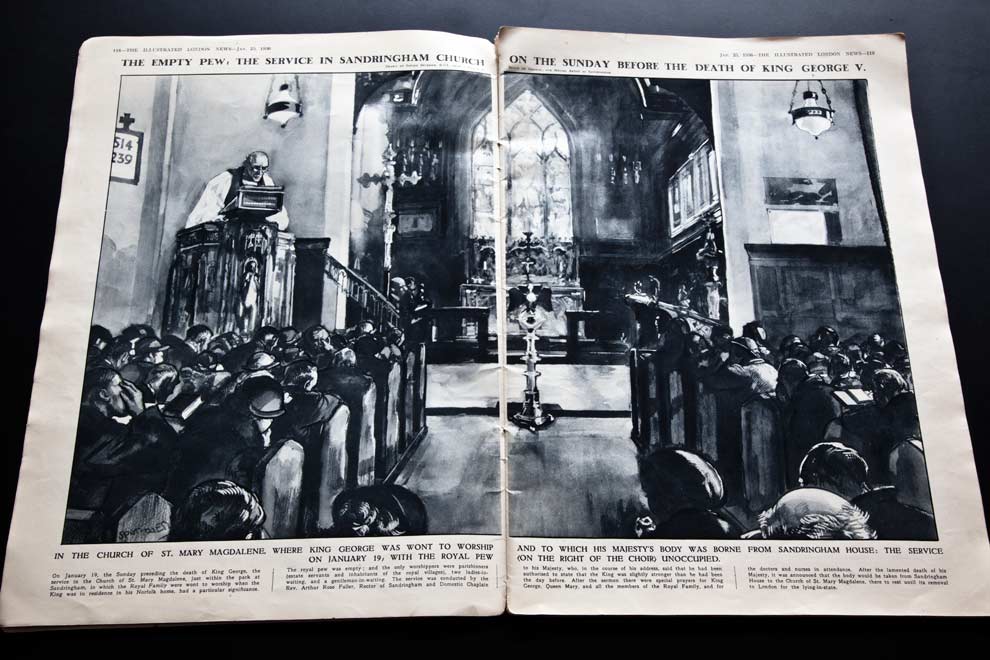 |
||||||||
This amazingly clear aerial photo of the Sandringham House in Norfolk shows the whole estate covered by snow. In the top right the vegetable gardens are visible. George V. died in his bedroom "on the first floor of the bay which is to the right of the centre steps down to the formal garden. Queen Mary's apartments are to the right of the Majesty's." |
||||||||
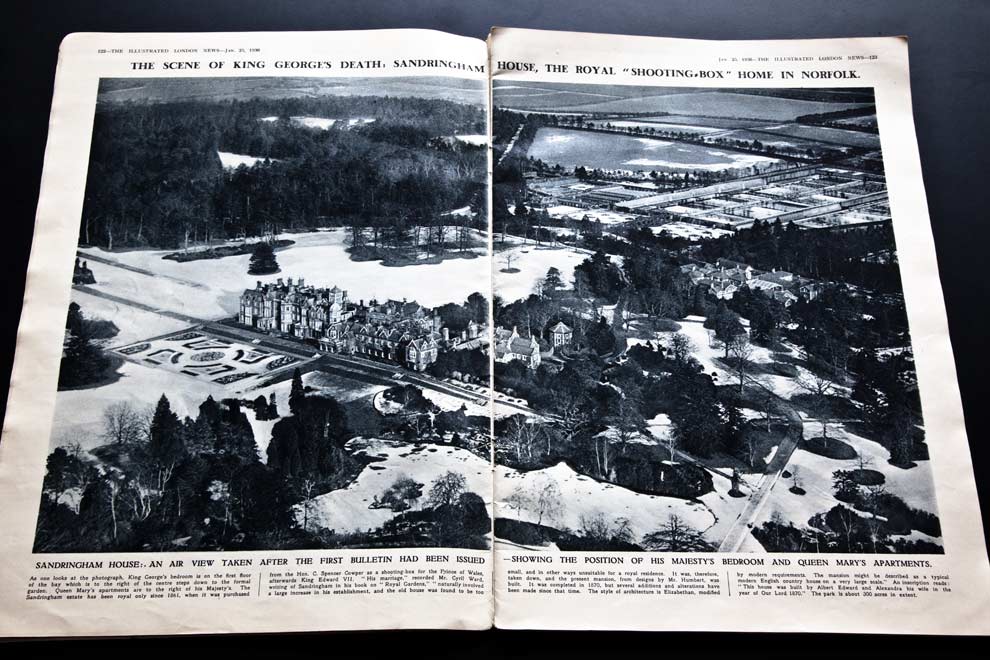 |
||||||||
Close-ups of the next page: "Before and after King George's illness". Left: The King, "leaving London on December 21 to spend christmas at Sandringham house", touches his hat; his wife next to him. Right: "After King George's illness had begun to cause anxiety: Princesses Elizabeth and Margaret of York arriving at Wolferton station on January 18, to return to town and thence to Windsor." |
||||||||
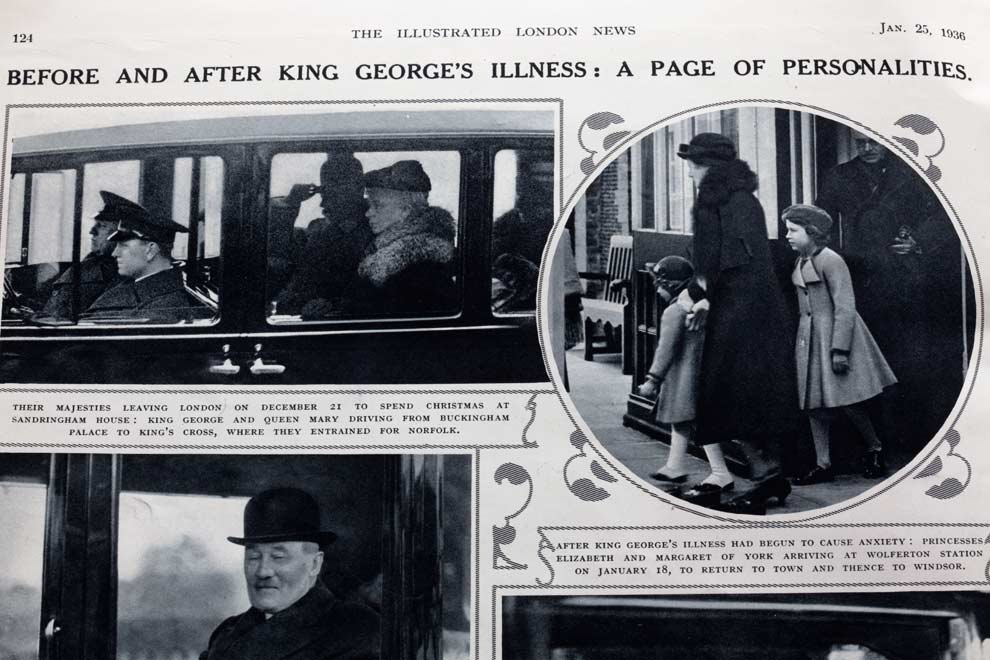 |
||||||||
Below you see a detail of the photo which shows a small notice pinned to the fence of Buckingham Palace in London on January 20, 1936, around midnight. "...all hope must be dismissed had previously been made known to the watchers by the announcement (issued at Sandringham at 9.25 p.m.) stating that 'The King's life is moving peacefully towards its close'. The end of their vigil came shortly after midnight with the final bulletin which stated that 'Death came peacefully to the King at 11.55 p.m. to-night.' Both the last bulletins, it may be recalled, were signed by Sir Frederic Willans, Sir Stanley Hewett, and Lord Dawson of Penn." Later revelations show that Lord Dawson of Penn actually brought the king's life to an end. |
||||||||
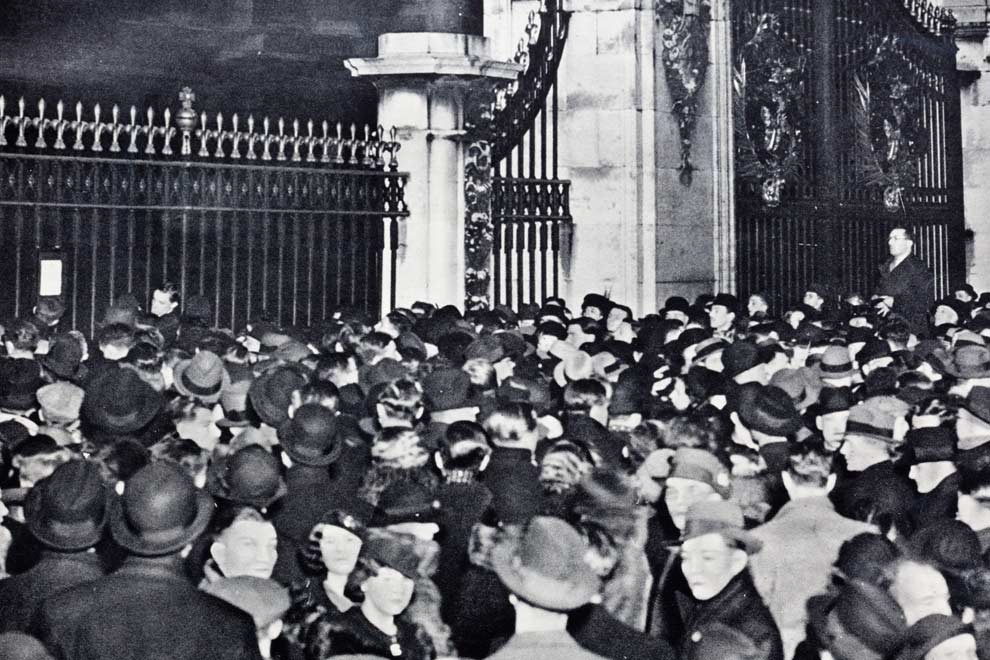 |
||||||||
The close-up of the following page with King George's doctors and his long-time nurse Catherine Black shows "Physician-in-Ordinary" to the king, Lord Dawson of Penn. Fifty years after George's death the doctor's diary was found and published. It proves that he gave the king a lethal injection of cocaine and morphine. Lord Dawson of Penn's diary: "At about 11 o'clock it was evident that the last stage might endure for many hours, unknown to the patient but little comporting with the dignity and serenity which he so richly merited and which demanded a brief final scene. Hours of waiting just for the mechanical end when all that is really life has departed only exhausts the onlookers and keeps them so strained that they cannot avail themselves of the solace of thought, communion or prayer. I therefore decided to determine the end and injected (myself) morphia gr.3/4 and shortly afterwards cocaine gr. 1 into the distended jugular vein." |
||||||||
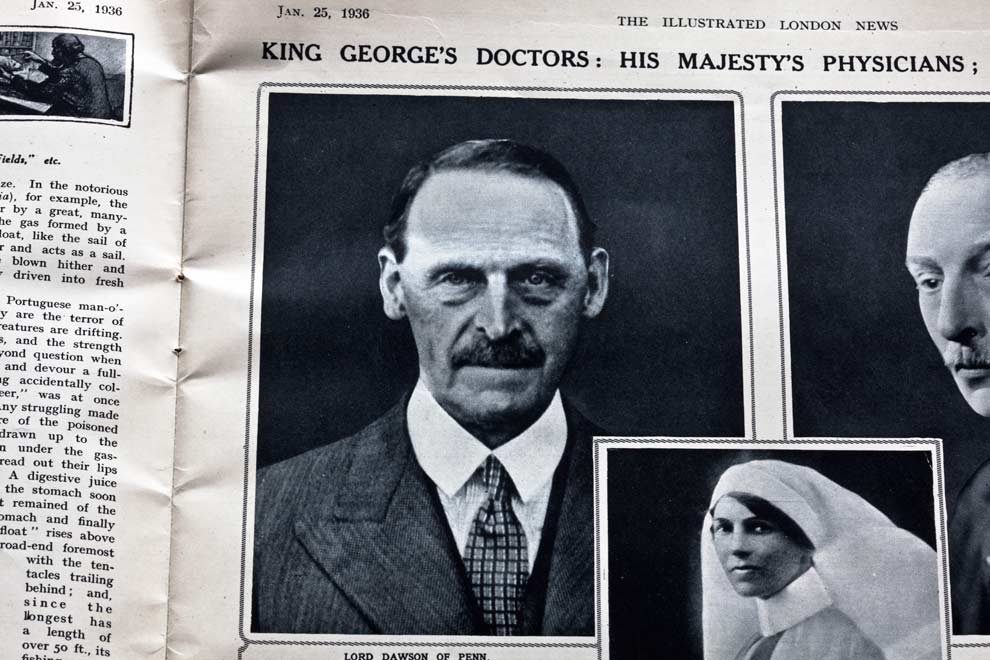 |
||||||||
From here on the pace of the magazine opens up. In the section "The World of Science" there's a long article about the "By the Wind Sailer", a tiny jelly fish with a raft-like body and a sail. "Books of the Day" covers several non-fiction books on the Great War and Aviation. A full size painting shows the Sandringham House in a star filled night: ""Keeping watch by night near the home of the dying king". After a double page with photos of the coffin and a comparably ungarnished page about the accession of King Edward VIII. Edward remained king for less than a year. The next big section covers George's life since childhood. Hardly any text, pictures only. From around the year 1900 on mainly photographs like the ones below: Tennis star Kathleen Godfree aka Kitty McKane dropping a curtsy to the king and queen at Wimbledon 1926. The Manchester City football captain politely bows to his Majesty. The photo was probably taken in the same year at the 1926 FA Cup Final. |
||||||||
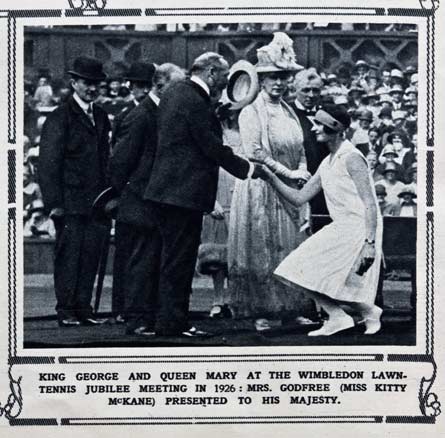 |
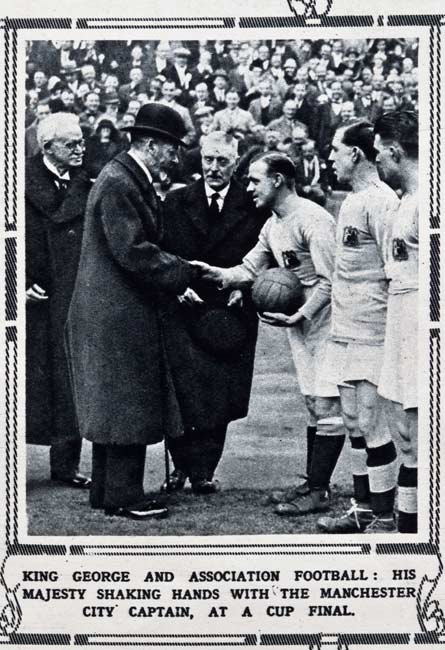 |
|||||||
| A large section of this issue of the Illustrated London News covers the king visiting India and Nepal. The following photograph already appeared in the magazine in 1911 ánd then carried the note "It is on record that, out of a total of 30 tigers killed, 24 fell to the King's rifle." | ||||||||
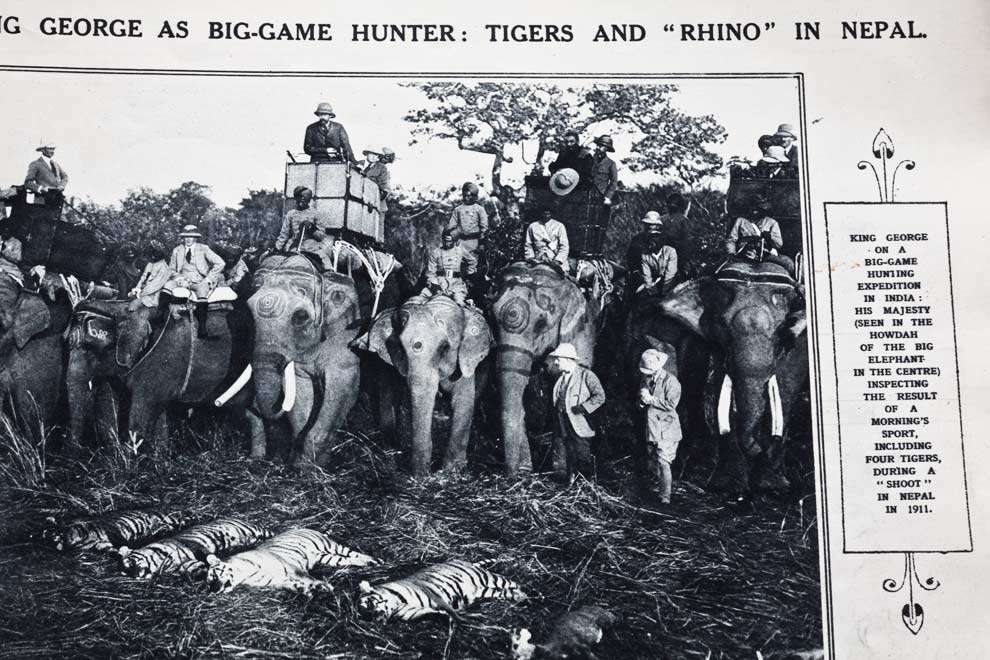 |
||||||||
This aesthetically and technically remarkable photograph was first published in the January 20, 1912, issue of the magazine. King George V. stands high on an elephant and shoots a rhinoceros. The animal obviously moves too fast for the camera, it looks all blurred, but the photographer's focus was on the king's silhouette anyway. "The rhinoceros (we read) is regarded as the royal game in the royal preserve of Nepal, and is shot only by permission of the State. Eighteen were accounted for during the imperial trip." |
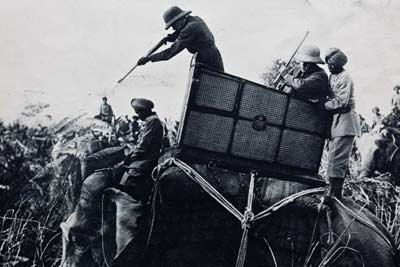 |
|||||||
Reflecting on it's text back in May, 1913, the 1936 issue's caption of the photograph where George V (right) rides alongside with the German Kaiser Wilhelm II reads: "A pre-war visit to the Ex-Kaiser: King George riding with the German Emperor in Berlin in May 1913." Wilhelm II became "Ex-Kaiser" on November 9, 1918, at the end of the war. The two horsemen on this photo were first cousins. Wilhelm had an alienated relationsship with Britain and was famous for his outburts of fury. In a 1908 interview with the Daily Telegraph he proclaimed: "You English are mad, mad, mad as March hares." |
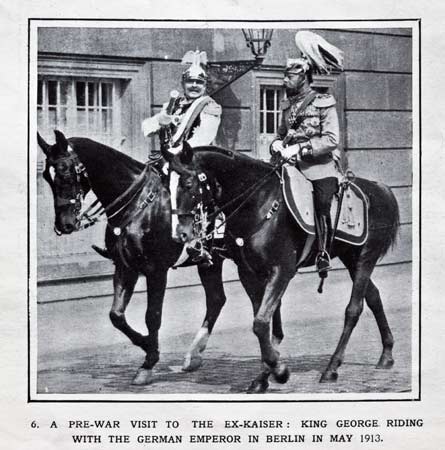 |
|||||||
| On April 20, 1917, St. Paul's church in London is decorated with the American and British flags side by side: "America's national anthem sung when the U.S.A. entered the war." When the war was over a year later, Britain was bankrupt, and the credit from the USA came under harsh conditions. | 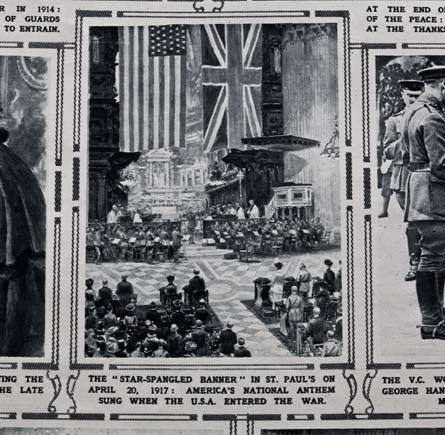 |
|||||||
| On the page "Royal Activities: King George in state and on social occasions" we find this illustration showing "King George and the medical science: His Majesty looking at a pationt under the X-Rays and in a 'safety' cabinet, at the London Hospital" in August 1910. X-ray diagnostics were in full swing. Nine years earlier the beams earned the German physicist Wilhelm Conrad Röntgen the first Nobel Prize in physics. | 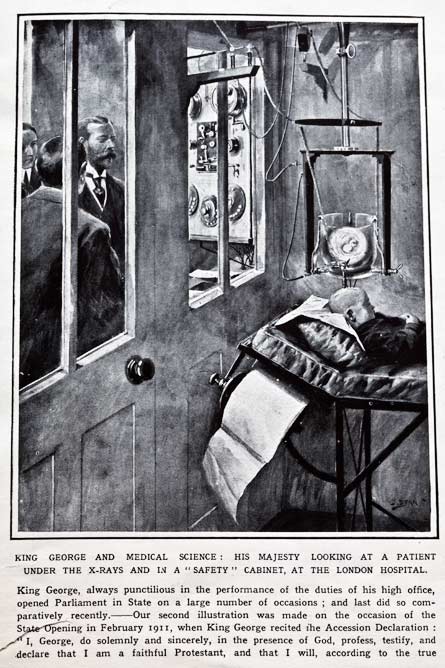 |
|||||||
In the section of political contacts we see George V. together with several international leaders. Here, during a visit to Italy in May 1923, he (left) shakes hands with "the founder of Fascismo [...] Signor Mussolini in Rome." The editors of the magazine avoid any critical notes; probably the King was not aware of what was going on in Rome at that time, anyway. Benito Mussolini had just made big steps in turning Italy into a totalitarian state ruled by his fascist party. |
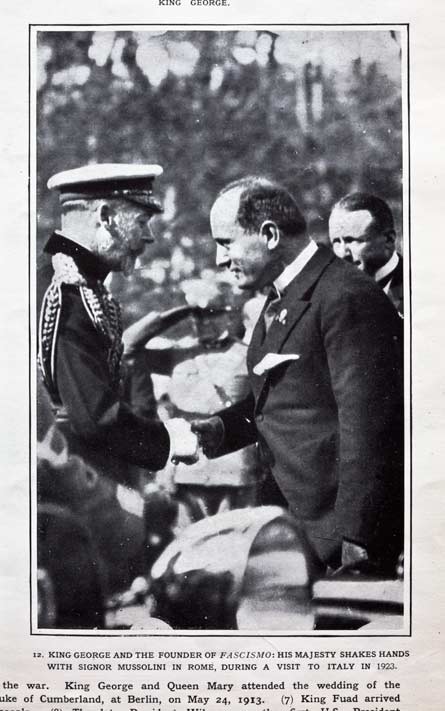 |
|||||||
One page is titled "A father to his people: The 'paternal' side of King George". Below you see two of the photos on this page, enlarged: the King "chatting with a young war-worker in a Sunderland yard" (the 'young war-worker' actually looks more like a child of 8) and "directing Princess Elizabeth's nurse at the Balmoral Fête, in September 1927". The later Queen sits quite relaxed in her pram. |
||||||||
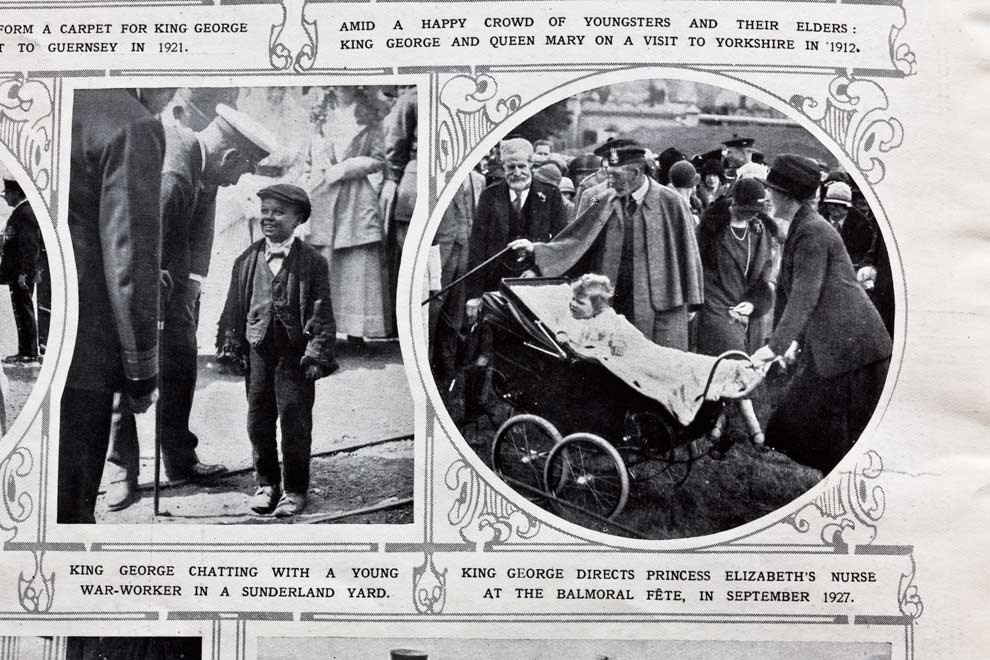 |
||||||||
Queen Elizabeth II as a child, throwing a snow ball towards her sister Margaret. More to come... |
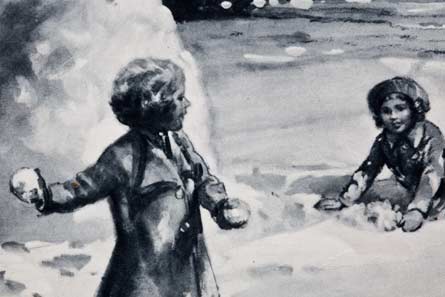 |
|||||||